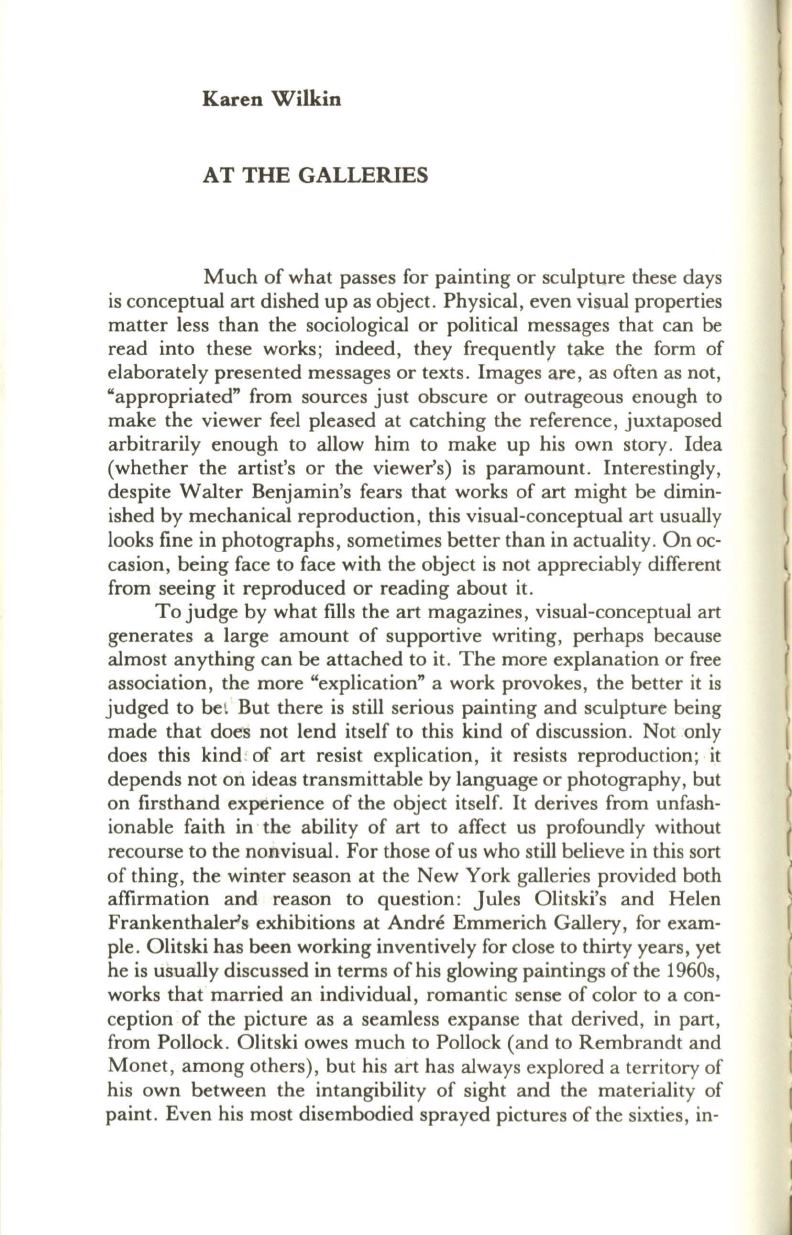
Karen Wilkin
AT THE GALLERIES
Much of what passes for painting or sculpture these days
is conceptual art dished up as object. Physical, even visual properties
matter less than the sociological or political messages that can
be
read into these works ; indeed, they frequently take the form of
elaborately presented messages or texts . Images are, as often as not ,
"appropriated" from sources just obscure or outrageous enough to
make the viewer feel pleased at catching the reference, juxtaposed
arbitrarily enough to allow him to make up his own story . Idea
(whether the artist's or the viewer's) is paramount. Interestingly,
despite Walter Benjamin's fears that works of
art
might be dimin–
ished by mechanical reproduction, this visual-conceptual art usually
looks fine in photographs, sometimes better than in actuality. On oc–
casion, being face to face with the object is not appreciably different
from seeing it reproduced or reading about it.
To judge by what fills the art magazines, visual-conceptual art
generates a large amount of supportive writing, perhaps because
almost anything can be attached to it. The more explanation or free
association, the more "explication" a work provokes , the better it is
judged to bel But there is still serious painting and sculpture being
made that does not lend itself to this kind of discussion . Not only
does this kind : of art resist explication, it resists reproduction; it
depends not on ideas transmittable by language or photography, but
on firsthand experience of the object itself. It derives from unfash–
ionable faith in ' the ability of art to affect us profoundly without
recourse to the nonvisual. For those of us who still believe in this sort
of thing, the winter season at the New York galleries provided both
affirmation and reason to question: Jules Olitski's and Helen
Frankenthalerls exhibitions at Andre Emmerich Gallery, for exam–
ple . Olitski has been working inventively for close to thirty years, yet
he is usually discussed in terms of his glowing paintings of the 1960s,
works that married an individual, romantic sense of color to a con–
ception of the picture as a seamless expanse that derived, in part,
from Pollock. Olitski owes much to Pollock (and to Rembrandt and
Monet , among others), but his art has always explored a territory of
his own between the intangibility of sight and the materiality of
paint. Even his most disembodied sprayed pictures of the sixties , in-
l
~


